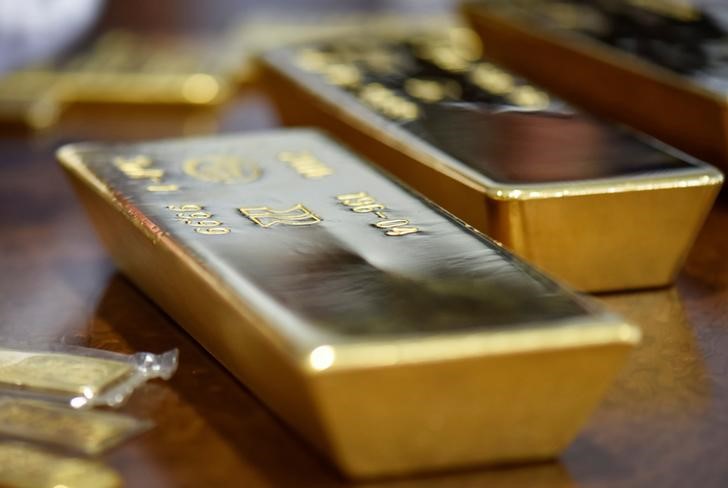Investing.com - Gold prices retreated from their highest level in around two months on Monday, as geopolitical concerns eased after senior U.S. officials sought to play down risks of a military conflict with North Korea.
Geopolitical concerns appeared to fade as U.S. Secretary of Defense Jim Mattis and Secretary of State Rex Tillerson both said on Sunday that the Trump administration would continue to seek diplomatic resolutions with Pyongyang.
CIA Director Mike Pompeo and national security adviser H.R. McMaster also said there was no indication war with North Korea will break out.
The soothing comments came after Present Donald Trump said late last week that military options against the hermit state were “locked and loaded”.
Comex gold futures slumped around $9.00, or about 0.7%, to $1,285.42 a troy ounce by 7:30AM ET (1130GMT). It rose to its highest since June 6 at $1,298.10 in the prior session.
The yellow metal notched a third-straight day of gains on Friday, capping its strongest weekly rise since April, as simmering North Korean tensions buoyed haven demand for precious metals.
Meanwhile, market players looked ahead to a busy week of economic data, including the monthly retail sales report on Tuesday, for further clues on the timing of the next Federal Reserve rate hike.
Traders will also focus on minutes of the Fed’s latest policy meeting due Wednesday, as they look for more hints on how the central bank plans to pare back its balance sheet.
Markets remain skeptical the Fed will raise interest rates again this year, according to Investing.com’s Fed Rate Monitor Tool, due to worries over the subdued inflation outlook, but it is widely expected to start the process of reducing its balance sheet by September.
Elsewhere on the Comex, silver futures declined 12.9 cents, or around 0.8%, to $16.94 a troy ounce.
Among other precious metals, platinum sank 1.8% at $972.05, while palladium was little changed at $894.92 an ounce.
Meanwhile, copper futures struggled after data showed that factory output in China rose 6.4% in July from a year earlier, the slowest pace since January, according to data from the National Bureau of Statistics.
Analysts had predicted output would grow 7.2%, down from 7.6% in June.
The Asian nation is the world’s largest copper consumer, accounting for almost 40% of world consumption last year.
